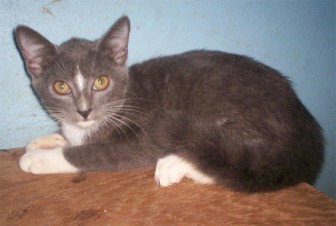Continued
During the final two weeks of last year, we took a break from science and indulged in more light-hearted discussion. Now that we have entered the New Year, we may now revert to a more focused conversation on dealing with poisons.
Pet owners use all sorts of chemicals to get rid of skin parasites (ticks, fleas, mites, lice, etc). There was a time when old engine oil (waste oil) was a standard method of treatment against mange. Even today, one hears of the use of kerosene oil, Jeye’s Fluid, Baygon spray (or other insect sprays) in the everyday fight against bugs that affect our pets.
 After 42 years in the practice, I still get surprises relative to the arsenal of chemicals that is at the pet owner’s disposal. Green calabash pulp was one of the latest. And, of course, everybody swears that his/her remedy/method works 100 per cent.
After 42 years in the practice, I still get surprises relative to the arsenal of chemicals that is at the pet owner’s disposal. Green calabash pulp was one of the latest. And, of course, everybody swears that his/her remedy/method works 100 per cent.
The problem is that the active ingredients in these chemical substances could also be so poisonous that it not only could kill the ticks, but the host (the dog) as well. On top of all that, many people don’t use the correct dilution rate. They tend to feel that if a dilution rate of two teaspoonfuls of the chemical to a gallon of water works well, then four teaspoons would work better. Well, it is just not so. Double the dose (even 50 per cent more of the dose) can be lethal.
Usually, we use these lotions/powders/washes/shampoos when the animal has mange or visible parasites on the skin. These parasites would have elicited an itch/scratch cycle, not only because they actually bite the animal’s skin, but also because they produce an allergic reaction. The point is that the animal’s skin is usually already mutilated, not lastly due to all that scratching. As such, it becomes very easy for the lotion/powder to go through the break in the skin and get into the bloodstream, thus poisoning the animal directly.
We should always bear in mind, as I mentioned above, that if the chemical is poisonous to the parasite, it is also to some degree deleterious to the health of the host.

On other occasions, after the bath with the chemicals, the parasites try to escape the chemical by actively burrowing deeper into the skin. That creates further an itch sensation and the animal uses its mouth (teeth) to capture the itch-causing, burrowing insect or tick. In so doing, the dog or cat can ingests the poison from the skin. Of course, cats (which instinctively groom themselves with their tongues) are much more susceptible to the poisons when they are licking their skins. Also, the chemical itself might create an inflammatory reaction.
My advice is that the pet owner should solicit information from his/her veterinarian on any issue concerning skin care or parasite control on or in the animal. If one has to use chemicals to get rid of the parasites, then follow the vet’s advice to the letter. For example, I don’t like to recommend Sevin powder as an insecticide or acaricide (against ticks), but if there is no other choice, I do advise that the powder be dusted off the dog half an hour after application on the skin.
One can use ordinary soap water to wash off the poisonous chemical from the skin. I usually recommend a lukewarm shampoo bath. (Shampoos are gentler to the skin than soap.) I am also of the general opinion that even if the chemical is not irritating the skin, it should be washed off. I recognize that one wants to have a long lasting effect of the parasiticide, but here in the tropics, the residual potency declines rapidly after the first couple of days to the point where is has no efficacy. So, since the dog/cat could lick off and swallow the poison, it is better to wash it off as soon as it had done its primary job of killing the parasite.
Finally, if the dog or cat shows any sign of abnormal behaviour (eg, nervous system reactions) after administering the chemical, get to your vet immediately. It would be good, if you could carry a sample of the vomit, and you should take the original container with the chemical and any insert (literature) which accompanied the chemical.
Enough for today.
Happy New Year to you all. Let your resolution be to care more for your companion animal and report to the GSPCA, or to the police directly, if you see animals being abused.
Please implement disease preventative measures (vaccinations, routine dewormings, monthly anti-heartworm medication, etc) and adopt-a-pet from the GSPCA’s Animal Clinic and Shelter at Robb Street and Orange Walk, if you have the wherewithal to care well for the animals. Do not stray your unwanted pets, take them to the GSPCA’s Clinic and Shelter instead. If you do not wish your pet to have puppies or kittens, you may exploit the GSPCA’s free spay and neutering programme. If you see anyone being cruel to an animal, or if you need any technical information, please get in touch with the Clinic and Shelter by calling 226-4237.





